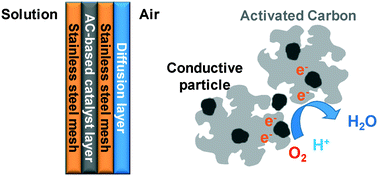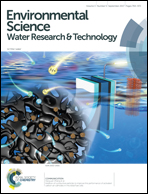Addition of conductive particles to improve the performance of activated carbon air-cathodes in microbial fuel cells
Abstract
Activated carbon (AC) is an inexpensive and sustainable catalyst for oxygen reduction in air-cathodes of microbial fuel cells (MFCs), but its electrical conductivity is relatively poor. To improve cathode performance, five different more conductive materials were added to AC: three carbon materials (carbon black, mesoporous carbon, and carbon nanotubes), and two metal powders (inexpensive copper and inert gold). Carbon-based particles improved maximum power densities by 6–14% compared to plain AC due to reduced charge transfer resistance. Copper powder had reduced performance, likely due to toxicity effects on the anode bacteria, while gold particles were similar to plain AC. Heat treated AC mixed with carbon black produced the highest power density of 1900 ± 76 mW m−2, 41% higher than the widely used Pt air-cathode (1350 ± 55 mW m−2). The use of inexpensive carbon black with heat treatment was therefore the most effective and economical approach for improving cathode performance in MFCs.



 Please wait while we load your content...
Please wait while we load your content...